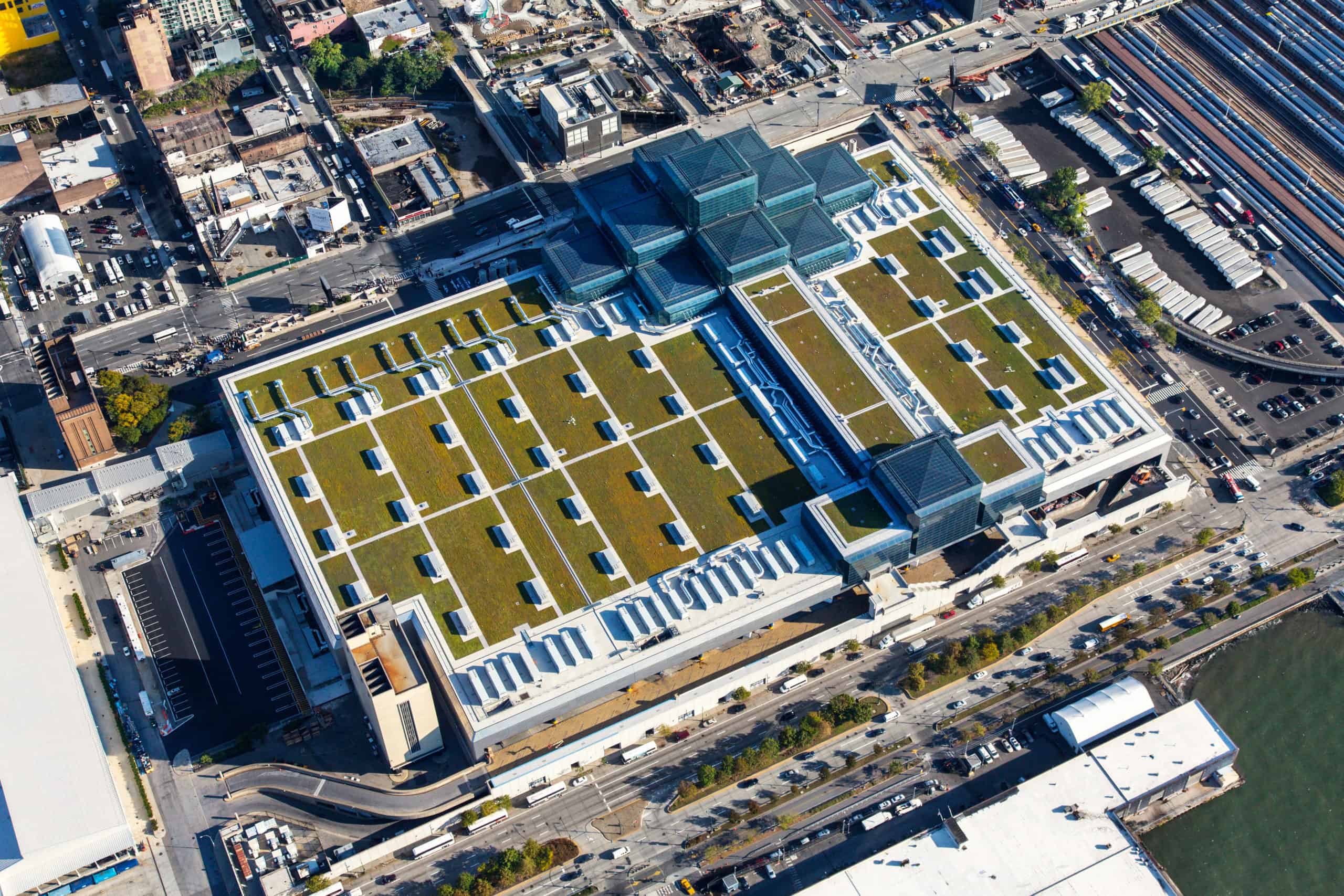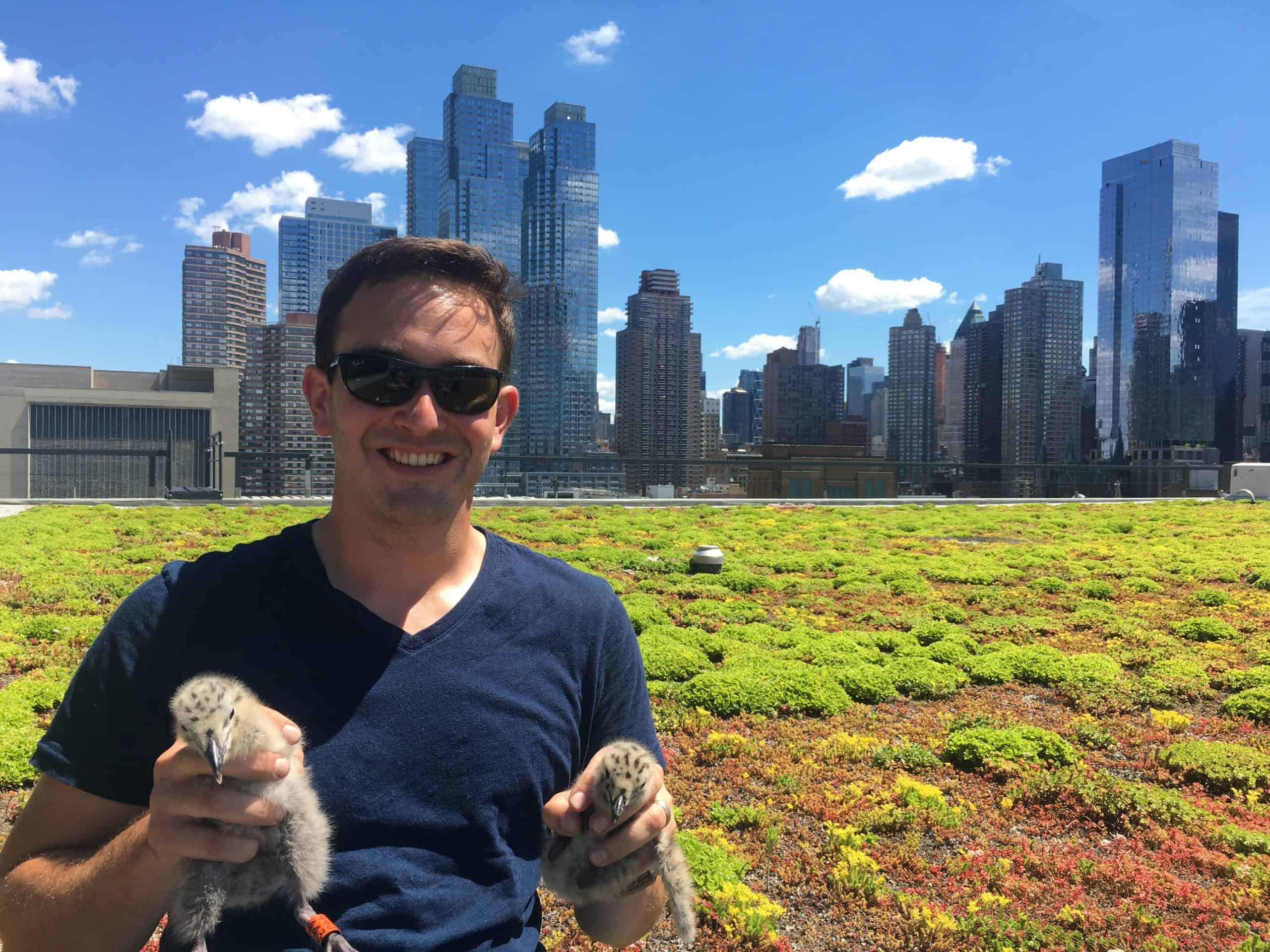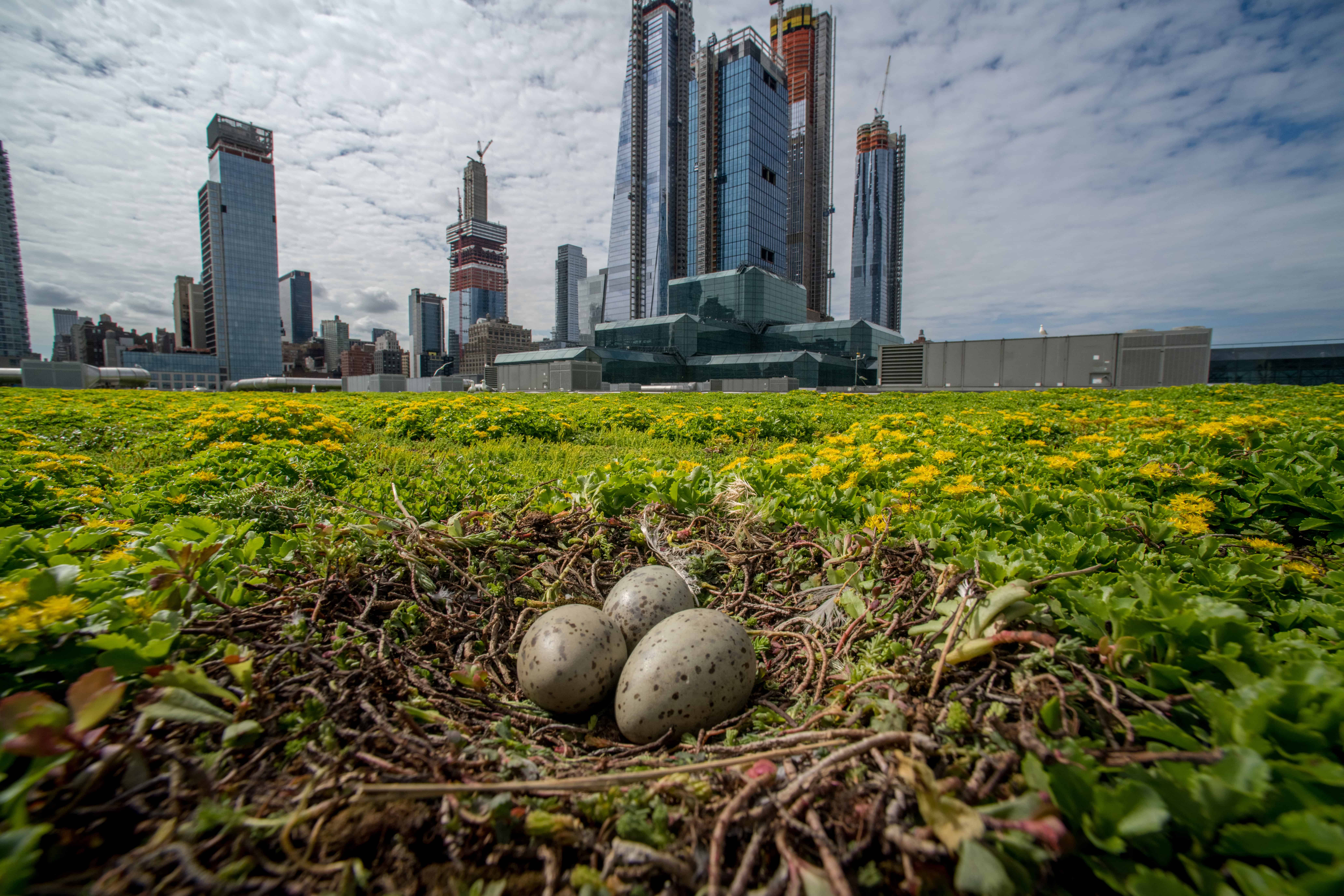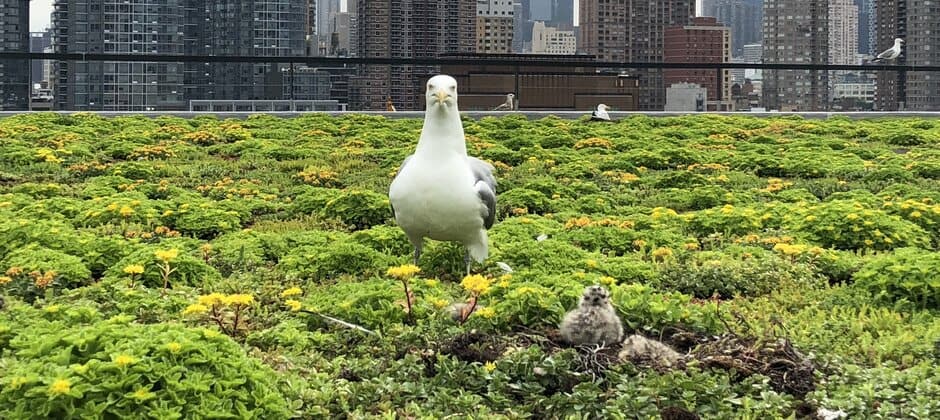Share this article
TWS2021: NYC green roof provides ample gull habitat
The Jacob K. Javits Convention Center is a massive piece of architecture, even by New York City standards. The building takes up four city blocks of space right alongside the Hudson River—and gulls love it.
The Javits Center completed renovations to its roof in 2013, installing soil and grass-like sedum plants that provided one of the city’s largest green spaces south of Central Park.
“It’s a pretty useful and important habitat on the west side of Manhattan,” said TWS member Dustin Partridge, a senior ecologist and green infrastructure lead with New York City Audubon Society.

The Javits Center provides plenty of green space in a highly urban area. Credit: Javits Center
Partridge and his colleagues have been working with the Javits Center since 2014 to determine what kind of wildlife was on the roof. They found more than 35 bird species, four bat species and thousands of arthropods from hundreds of taxa using the green space. Kestrels (Falco sparverius) were feeding on grasshoppers there, migrating warblers were foraging on other creatures in the sedum, and flycatchers were coming through in the fall.
But one of the most prominent species on the roof were herring gulls (Larus argentatus). In research presented at The Wildlife Society’s virtual 2021 Annual Conference, Partridge describes the management and conservation of these New York City-rooftop birds.
Herring gulls, a common East Coast species, routinely nest on urban rooftops. A small colony of eight gull nests was on Javits Center’s rooftop even before it was given a green renovation. The population stayed steady, but by 2019, this number had skyrocketed to more than 150 birds.
While this was partly due to the green retrofit, the demolition of a building nearby caused a mass migration of birds to the Javits Center. At that point, Partridge said gull management became more focused on control than conservation, as gulls began pulling out the materials around the edge of the soil and sedum plots and damaging air vents. Gulls are also messy. They will leave behind some of rotted remains of fish they had caught to eat. “Gull colonies can become a nuisance,” Partridge said.
Since gulls aren’t picky in New York City, their scraps also include junk food and trash. “It’s New York, so they’ll also be eating steaks and hamburgers,” he said.
Other buildings often turn to lethal control or other deterrents to keep gulls from causing these sorts of problems. But wildlife managers wanted to keep a sustainable number of gulls on the roof of the Javits Center.
Managers started to create a gull exclusion zone on the roof, where they would remove nests before the gulls laid eggs, in order to create a clear space for other wildlife that the gulls wouldn’t take over. The gulls were also given their own conservation zone, where they were encouraged to nest.
“Essentially, it was setting it up so the gulls didn’t have a hospitable zone to make a nest outside this conservation zone,” Partridge said.
These actions seemed to work—the colony didn’t grow that much after the management. Another nearby building was demolished at this time with more than 60 nests, and the Javits Center didn’t see a similar influx of new gull nests like they did the last time that happened. “They quickly understood that [the conservation zone] was where they were meant to be,” Partridge said.

Gulls were excluded from parts of the roof and allowed to nest in others to limit damage to infrastructure. Credit: Dustin Partridge
Aside from limiting damage, Partridge said the gull management also helped improve the working conditions for the various contractors who worked on the roof maintaining air-conditioning vents and other equipment. Prior to the management, the gulls were less used to the presence of humans in their colony.
“Gulls will dive-bomb you, they will defecate on you and try to keep you away,” Partridge said.
But having managers out there all the time helped the gulls get used to human presence. “The engineers were reporting vastly improved working conditions,” Partridge said. In fact, one year when the wildlife managers left before nesting seasons, the conflicts between birds and contractors resumed.

Dustin Partridge with herring gull chicks. Credit: R. Ciardullo
Tracking work has also revealed that Javits Center gulls travel pretty far. Many of the birds on the conference center were banded, and some of them have turned up as far south as Florida or Louisiana, and as far north as Toronto. “This population of gulls on Javits is almost becoming a source population for gulls across the East Coast,” Partridge said.
The gulls also provide important habitat features for other species up there. Their nests provide microniches for insects and other arthropods, and their guano fertilizes sedum and feeds other creatures.
“These green roofs, when they’re installed, are providing a really useful habitat for bird migration in spring and fall, and a very useful foraging habitat,” Partridge said. “It’s exceeded our initial expectations.”

The gull colony provides ecological niches for other species on the roof of the convention center.
Credit: Javits Center
Header Image: A herring gull nest on the roof the Javits Center in Manhattan. Credit: Dustin Partridge








